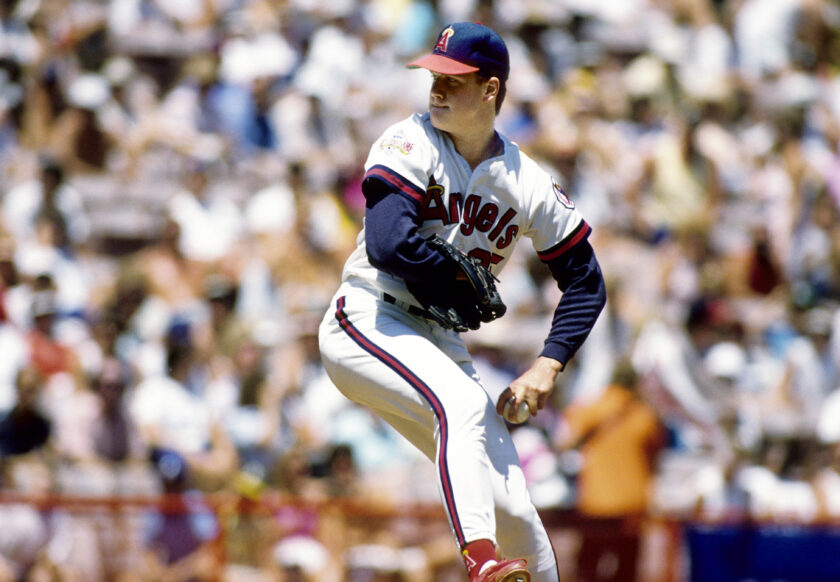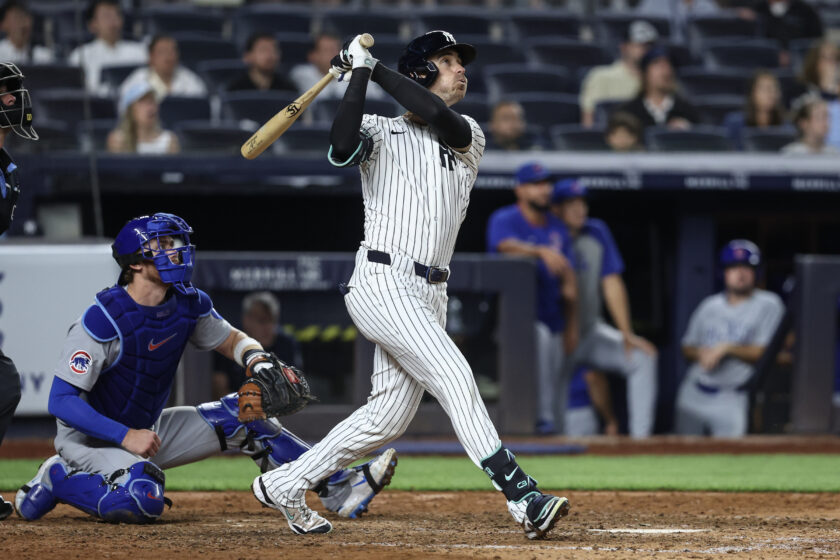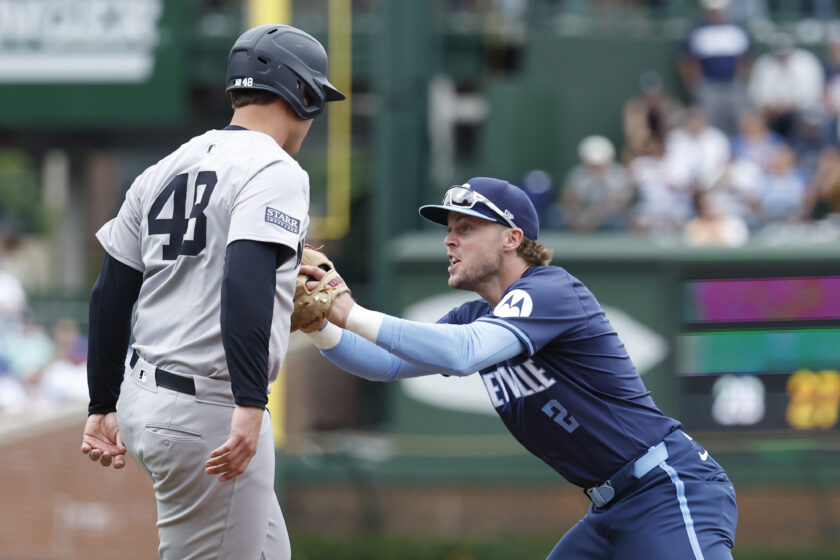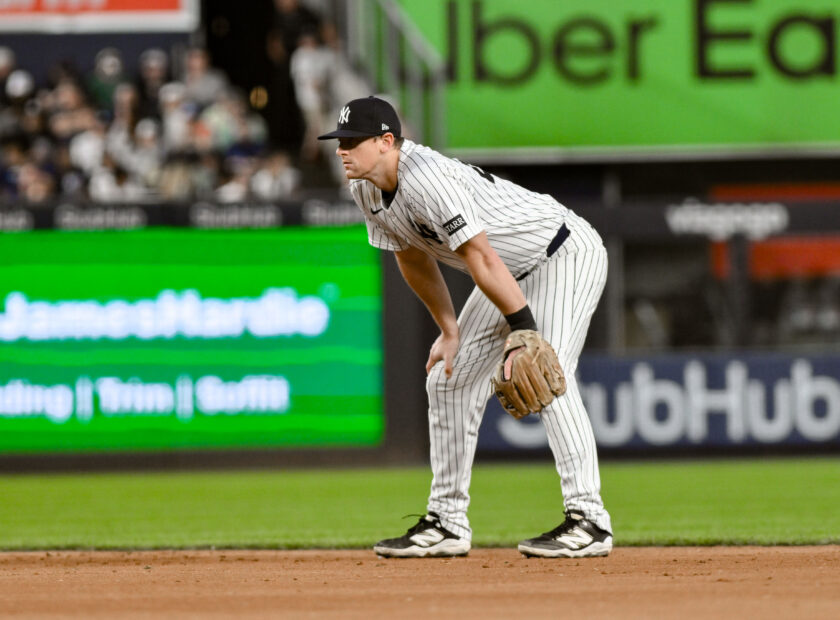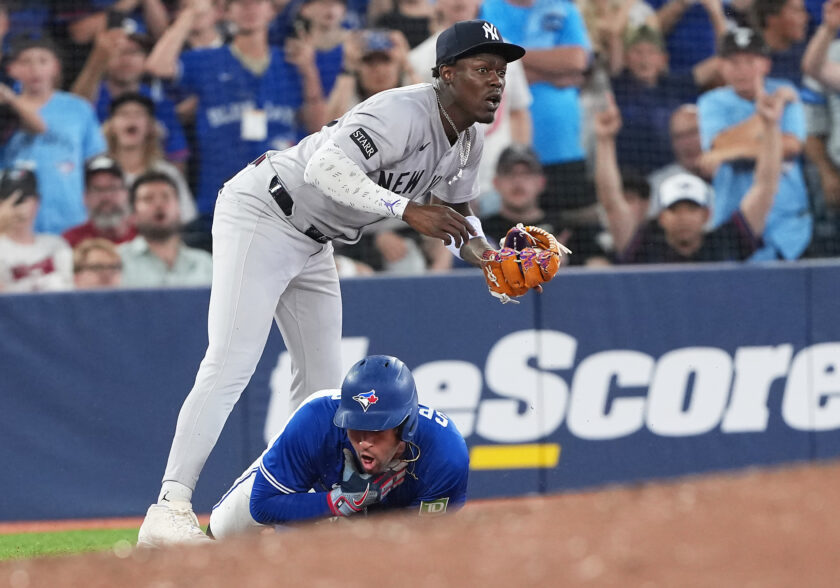Who else has taken path Yankees’ Michael King is now on?
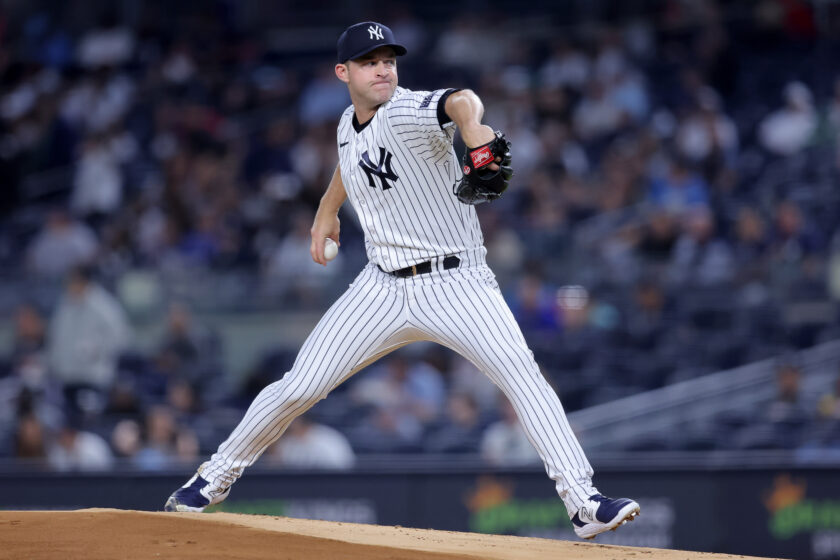
Michael King is making it pretty clear that he wants to be a regular in the New York Yankees’ rotation. He’s taken the ball on the mound from the start instead of coming in as a setup man and, simply put, ran with it.
King transitioned to the rotation full-time on August 24 and the numbers don’t lie. The man can pitch. He has a 1.27 ERA over six starts since and opposing hitters are batting just .229 with a .278 slugging percentage against him.
His latest effort came Wednesday night. King’s Yankees lost 6-1 to the Blue Jays, but not before he turned in seven innings of one-run ball. The 28-year-old righty also struck out a career-high 13 hitters.
It’s been an interesting path indeed for the former Eagle of BC. Racing through three levels of the minors in 2018 before injuring his elbow. To rehabbing most of 2019 before debuting out of pure necessity in the shortened 2020 season. To being a sort of Swiss Army pitcher figuring himself out, to becoming a trusted high leverage reliever.
Add another elbow injury, another strong return, and here we are. Michael King’s career path is pretty reminiscent of 90s Yankees staple Ramiro Mendoza. Except Mendoza never made the full-time move to starting.
Plenty of pitchers have done the opposite: Going from being a reliable starter to being a lockdown reliever. Hall of Famer Dennis Eckersley is probably the most notable. John Smoltz too, and he even went back to starting after three years as a star closer!
The reverse is less common but if Michael King makes the change and succeeds, he’ll be joining some pretty solid company.
David Wells. Let’s kick off with a former Yankee we all know and love. Boomer came up with the Blue Jays in 1987 and worked only as a reliever for three years save for two starts as a rookie. He would move back and forth between starting and the bullpen for the next three, and didn’t become a true full-time starter until he joined the Tigers in 1993. Wells was already 30 years old by then.

But the rest is history. Wells pitched for 15 more years for eight more teams, including two stints with the Yankees and another in Toronto. He made just one more relief appearance for his career, pitching 5.2 innings in a 17-inning marathon in 2003.
Kenny Rogers. Like his former Yankees teammate Wells, Rogers was primarily a bullpen arm in his early years in Texas. In 1992, he actually led MLB with 81 total appearances as closer Jeff Russell’s setup man. Rogers moved to the rotation full-time in ’93 and tossed a perfect game the following year. He would make only 14 appearances out of the bullpen for the rest of his career.

Like Wells, Rogers also became a journeyman who wound up pitching 20 seasons for six teams, including three stints with the Rangers. In 1996, he won a World Series with the Yankees.
Dennis Martinez. You’ll notice that longevity is a common theme here. Wells pitched for 21 years and Rogers for 20, but Martinez tips the scales with 23 MLB seasons under his belt. The Nicaraguan righty pitched for five teams over that stretch, most notably the Orioles and Expos.

Martinez didn’t become a regular starter until his third season, in 1978, but Baltimore clearly planned for him to be one. He only bounced back-and-forth between starting and the bullpen for a few years because of some off-field issues. He eventually got back on his feet and pitched a perfect game for Montreal in 1991.
Martinez was never a Yankee like Wells or Rogers, but probably would have appreciated wearing the pinstripes. He was 2-19 with a 5.25 ERA against the Bronx Bombers for his career!
Derek Lowe. This tall righty came up with the Mariners before heading to Boston in the Jason Varitek trade, and started just 19 of 83 games played in his first two seasons. The Red Sox then shifted Lowe to the bullpen full-time and he was a solid closer for two-plus years, leading the AL with 42 saves in 2000.

However, Lowe was a full-time starter coming up through Seattle’s farm system and the Red Sox surely knew this. Thus, switching him back into the rotation in 2001 was a seamless transition. He even tossed a no-hitter for them in 2002.
Lowe wound up pitching 17 years for seven teams and was a reliable, durable starter before moving back to the bullpen at the tail end of his career.That bullpen comeback just happened to occur with the Yankees in 2012, and a 39-year-old Lowe posted a 3.04 ERA in 17 games.
Follow ESNY on Twitter @elitesportsny
Josh Benjamin has been a staff writer at ESNY since 2018. He has had opinions about everything, especially the Yankees and Knicks. He co-hosts the “Bleacher Creatures” podcast and is always looking for new pieces of sports history to uncover, usually with a Yankee Tavern chicken parm sub in hand.

